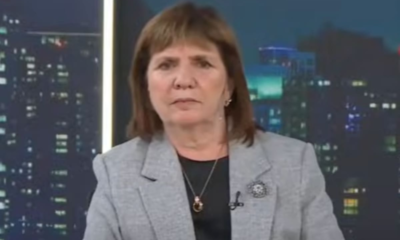INTERNACIONAL
State of War: How Trump is fighting a 9-front battle

President Trump is fighting a war with many battlefields.
It’s a nine-front crusade, although I could easily double that number.
If there’s a common thread here, it’s the president taking on elite institutions that he has long resented or reviled.
That’s why his first three months seem stuck on hyperspeed – critics would say chaos – because he’s broken with the traditional model of tackling one or two issues at a time. Voters gave him a second term to shake things up. It’s the first Trump term on steroids.
EDUCATION DEPT. TO RESUME COLLECTIONS ON DEFAULTED FEDERAL STUDENT LOANS FOR FIRST TIME SINCE 2020
The president is surrounded by loyalists who encourage his flood-the-zone approach, unlike some of the more traditional figures (Rex Tillerson, Jim Mattis, Gary Cohn) who tried to restrain him the last time he lived in the White House.
One advantage is that he uses Truth Social as a weapon, unloading on those who displease him.
And yet he still finds time to abolish rules limiting shower pressure, call for the abolition of pennies, and come out against changing clocks (though his stance on daylight savings is unclear) – all matters that affect people’s daily lives.
Here, in no particular order, are Donald Trump’s nine battlegrounds:
1. TOP PRIVATE UNIVERSITIES
Although Trump himself went to the Wharton School, he is constantly attacking Columbia and other top Ivy colleges. Harvard, where he has frozen more than $2 billion in federal funding and another $7 billion is at risk, is fighting back. Plus, the IRS is looking at revoking the university’s tax-exempt status.
Trump has publicly criticized Harvard University multiple times in recent weeks. (Getty Images | iStock)
The White House now admits that the letter a Trump official transmitted to Harvard was «unauthorized» and should not have been sent. Harvard officials were stunned because they thought they were in the process of negotiating a settlement with the administration.
2. LAW FIRMS
One giant law firm after another, under pressure from Trump, has caved and reached settlements with the White House. This involves agreeing to provide up to $100 million or even $125 million in pro bono services on matters important to the administration. The alternative is an executive order pulling its members’ security clearances, making it impossible to serve their corporate clients without access to secret data. A few firms have fought back, and some attorneys have resigned in protest, but most are volunteering to settle.
3. MEDIA
President Trump has sued CBS, NBC and Gannett. He won a $16-million lawsuit against ABC–approved by Disney–after George Stephanopoulos repeatedly called him a rapist when he was actually held liable for sexual abuse. Even if the suits go nowhere, journalists and news outlets have to hire lawyers and go through an ordeal.
MARK ZUCKERBERG ON THE STAND: ‘CRAZY,’ ‘SCARY’ IDEAS LED HIM TO BUY INSTAGRAM AND WHATSAPP
Trump has long used the press as a foil, but now he ridicules the likes of CNN’s Kaitlan Collins when she tries to ask questions. He refused to take a question from an NBC reporter, saying the network has no credibility. And yet Trump provides an absolutely stunning degree of access. He takes questions virtually every day and has taken over the press pool (with the AP still excluded). The coverage is overwhelmingly anti-Trump–sometimes that’s self-inflicted–but that also boosts clicks and ratings. It’s a love-hate relationship.
4. FEDERAL RESERVE
The markets nose-dived again yesterday as Trump stepped up his personal assault on Fed Chairman Jerome Powell in an obvious attempt to pressure him into resigning. Powell’s job is to worry about inflation, not to goose the economy because the president wants him to cut interest rates.
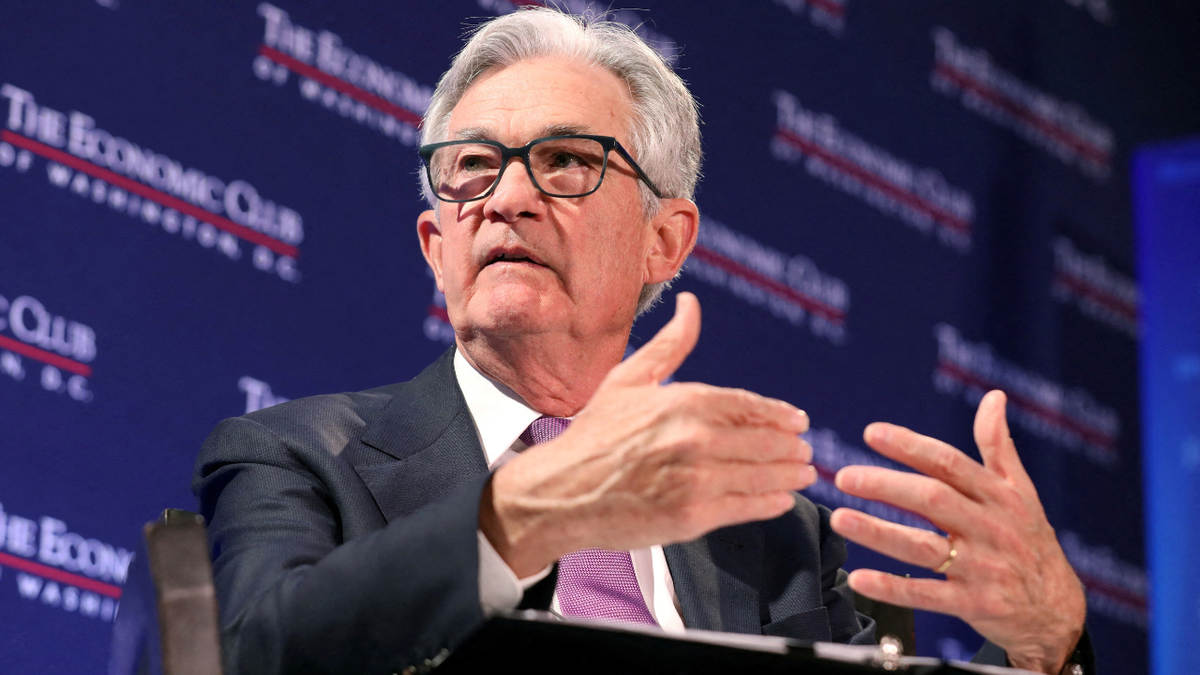
U.S. Federal Reserve Chair Jerome Powell responds to a question from David Rubenstein (not pictured) during an on-stage discussion at a meeting of The Economic Club of Washington, at the Renaissance Hotel in Washington, D.C., U.S, February 7, 2023. (REUTERS/Amanda Andrade-Rhoades/File Photo)
The entire tariff war has spooked Wall Street and alienated such allies as Canada (the 51st State???), Mexico and the European Union. He repeatedly promised a tariff war during the campaign, but no one expected tariffs of this magnitude, even against China, which has retaliated. Now Trump says he’ll even work out a deal with China. The 90-day pause briefly seemed to stabilize things, but whether the president can strike deals with 90 countries in 90 days remains to be seen.
5. COURTS
Donald Trump has a long history of attacking judges and prosecutors. Now he is going up to the line, and perhaps crossing it, when it comes to challenging court rulings, even with a 6-3 conservative majority on the Supreme Court.
The other day, the president deflected questions about the wrongful deportation of Kilmar Abrego Garcia, telling reporters to speak to the lawyers. The next day, he unloaded at length on Abrego Garcia, saying he’s a violent man who deserves to be in prison and criticizing Chris Van Hollen’s trip to visit him in a carefully staged photo op.
Abrego Garcia may well be a gang member, but a previous court ruling had found he should not be sent to El Salvador. Politically, this is a winning issue for Trump. But when SCOTUS ruled 9-0 that he should «facilitate» Garcia’s return, Trump pretty much ignored it.
TRUMP SAYS HE’S ‘NOT HAPPY’ WITH FED CHIEF JEROME POWELL
In a separate case, the Supreme Court, 7-2, ordered Trump not to move a second wave of Venezuelan migrants from where they are being held. This time, the administration agreed to follow the ruling.
6. FORMER AIDES
The president is going after two of his appointees from the first term.
He has ordered an investigation of his former cybersecurity chief, Chris Krebs, for «falsely and baselessly» denying that the 2020 election was rigged. He called Krebs a «significant bad-faith actor who weaponized and abused his government authority,» meaning Krebs found what every other probe, including one by Attorney General Bill Barr, found–no evidence of significant fraud.
Trump also ordered a probe of Miles Taylor, better known as «Anonymous,» for the New York Times op-ed he wrote ripping the president.
Taylor, a former Homeland Security official, «wrote a book under the pseudonym ‘Anonymous,’ making outrageous claims both about your administration and about others in it,» the president was told in a memo. So he too is under investigation. Trump even accused Taylor of committing «treason.»
7. HILL REPUBLICANS
The president has pressured members of his own party into going along with just about anything he wants. Other than the Matt Gaetz fiasco, that has meant approving all his nominees, despite doubts about the likes of Pete Hegseth and RFK Jr.
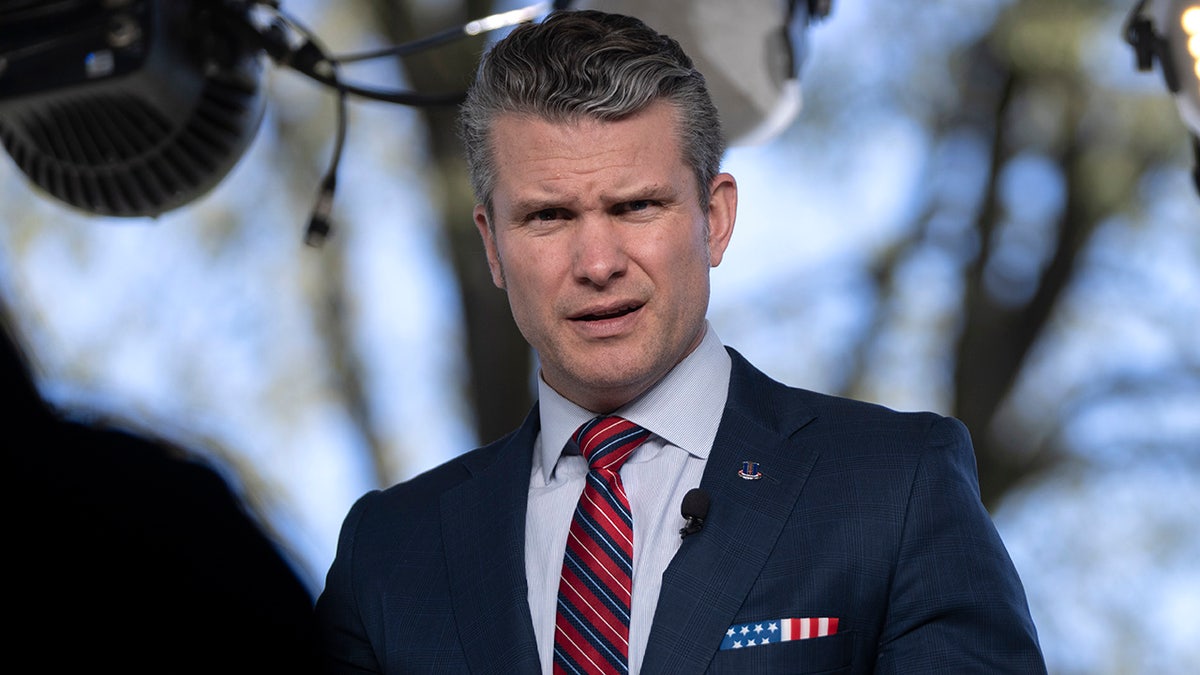
Defense Secretary Pete Hegseth prepares to give a television interview outside the White House, on Friday, March 21, 2025, in Washington. (AP/Mark Schiefelbein)
He has openly warned that he will use Elon Musk’s money to launch primary opponents against those who defy him. Musk has been a heat shield for Trump, though he has broken with him on tariffs. Remember that Musk poured money into that Wisconsin Supreme Court battle and lost. The chainsaw looks very different now.
While the violent attacks against Tesla have been despicable, Musk has also had to admit, after vowing to cut $1 trillion, that he’ll only be able to save $150 billion. Musk also admitted firing and having to rehire bird flu experts and nuclear bomb specialists, but remains the world’s richest man.
Lisa Murkowski just came out and said it: They are all afraid to criticize Trump for fear of political retaliation.
8. KENNEDY CENTER
It’s never been done, but the president fired all the Democratic board members and named himself chairman. He’s even suggested that he should host the annual awards given out for the glittering building on the Potomac named for JFK – not because he needs the attention, he says, but because it would be good for ratings.
The board has always been bipartisan, but that doesn’t bother Trump.
Some performers, led by Lin-Manuel Miranda of «Hamilton» fame, have already pulled out. Will only conservative performers get the green light?
I’ve picked the Kennedy Center as an example of Trump’s culture wars, but he’s also taken aim at the Smithsonian Institution and the National Zoo.
9. VOLODYMYR ZELENSKYY
The president, with help from JD Vance, utterly humiliated the Ukrainian president during that meltdown meeting at the White House. Now Zelenskyy bears a good bit of responsibility for the clash – he should have kept his mouth shut and walked away with an agreement, but took the bait.
Trump went a step further, kicking him out of the White House and sending him home.
CLICK HERE TO GET THE FOX NEWS APP
Now Trump, through Marco Rubio, says he may give up on negotiating a cease-fire in Ukraine. That’s exactly what Vladimir Putin wants, so he can keep on seizing land from the brave Ukrainians. One thing that Trump said he would do, but hasn’t done, is pressure his pal Putin. He still blames Zelenskyy and Ukraine for having the temerity to be invaded by the Kremlin.
That’s the list. Feel free to create your own. Sometimes it works for Donald Trump, sometimes it doesn’t. But it helps explain the dizzying pace of change and sends an unmistakable message that he is in charge.
Media,Media Buzz,US,Donald Trump,Politics,JD Vance,Elon Musk,US Education,Federal Reserve
INTERNACIONAL
Hillary Clinton sounded alarm on Biden’s political viability ‘by 2024,’ Klain told House investigators
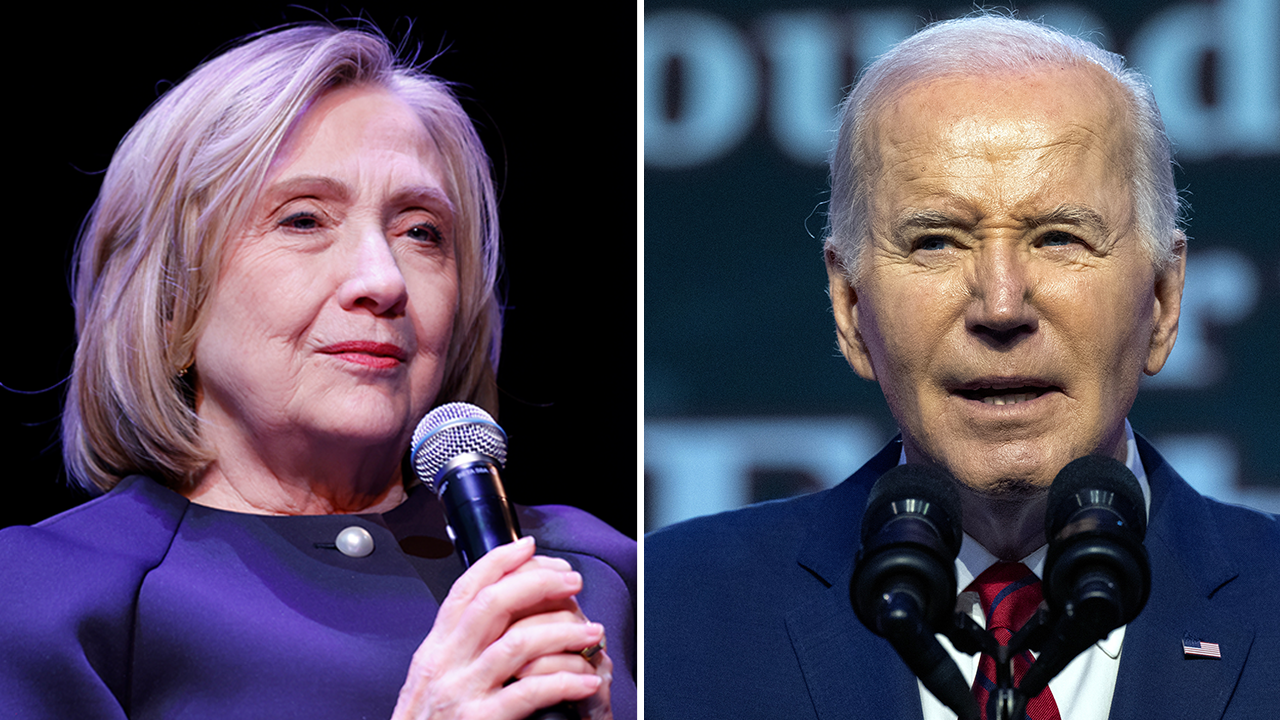
NEWYou can now listen to Fox News articles!
Ex-President Joe Biden’s former chief of staff Ron Klain told House investigators that Hillary Clinton approached him with concerns about the octogenarian leader’s political viability «by 2024,» Fox News Digital has learned.
Klain spoke with staff on the House Oversight Committee for over five hours on Thursday, as Committee Chairman James Comer, R-Ky., continues to probe whether top Biden aides concealed signs of mental decline in the ex-president.
A source familiar with his voluntary interview told Fox News Digital that Klain believed Biden was mentally sharp enough to serve as president, and was not too old to run.
But the ex-secretary of state and former Biden national security adviser Jake Sullivan both «approached Ron Klain stating they believed Joe Biden was not politically viable» months before he dropped his re-election bid in July 2024, the source said.
COMER DISMISSES BIDEN DOCTOR’S BID FOR PAUSE IN COVER-UP PROBE: ‘THROWING OUT EVERY EXCUSE’
Former Secretary of State Hillary Clinton shared concerns about ex-President Biden’s political viability by 2024, a source said. (Getty Images)
Sullivan told Klain that Biden «was less effective in 2024 compared to 2022,» the source said.
It’s not immediately clear if Biden’s mental acuity was the reasoning for their doubts, nor if they made the case to Klain together or separately.
But it’s a significant indictment coming from top national Democrats of Biden in general, long before concerns about his fitness for office within the party were made public knowledge.
Sullivan had been a top aide to both Biden and Clinton, having served as the latter’s senior policy advisor during her 2016 campaign.
Klain, who served as White House chief of staff for the first half of Biden’s term, conceded that the then-president was less energetic and more forgetful, though he defended his «acuity to govern,» the source said.
«Mr. Klain stated that President Biden often confused names and proper nouns, and it got worse over time,» the source said.
Fox News Digital was told that Klain also said there was no reason to doubt President Donald Trump’s own mental fitness.
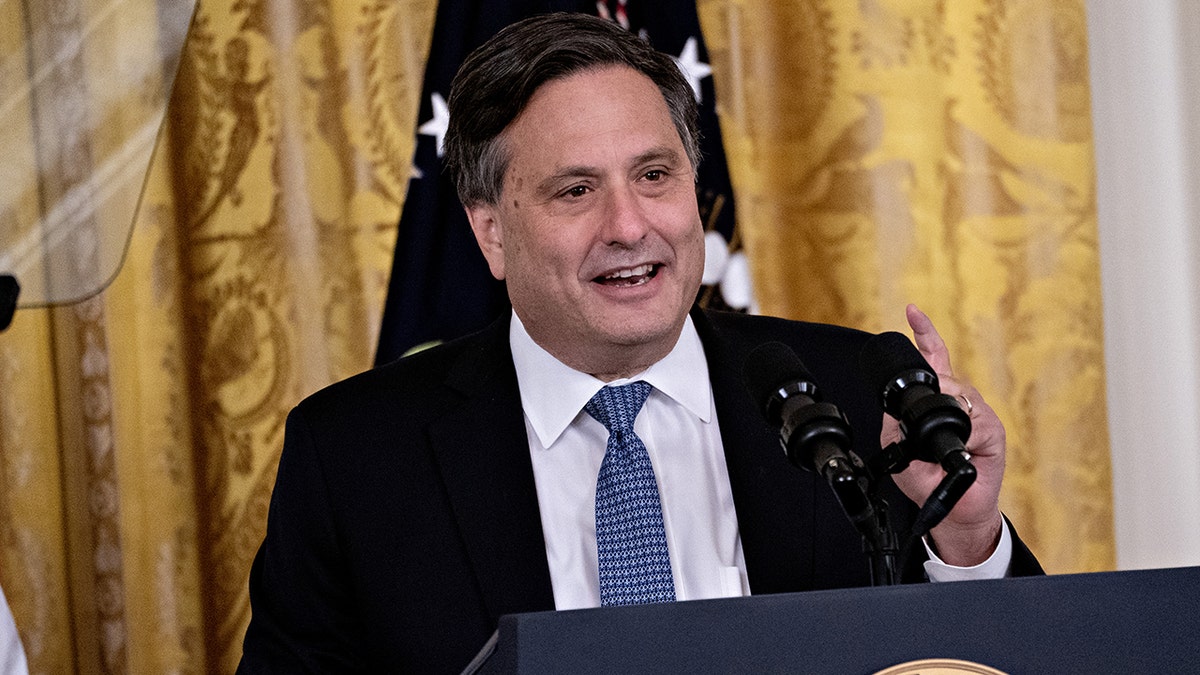
Ron Klain, former White House chief of staff, allegedly made the revelation to House investigators (Andrew Harrer/Bloomberg via Getty Images)
Klain said nothing to reporters when going in or out of the committee room Thursday.
He’s the sixth former Biden administration aide to appear for Comer’s probe.
And despite the interview being largely staff-led, Comer did make an appearance for the early half of the sit-down, and Reps. Andy Biggs, R-Ariz., and Ro Khanna, D-Calif., were both briefly there as well.
Both Biggs and Khanna called Klain «credible» from what they saw inside the room.
«I think he is telling what he knows accurately,» Biggs told Fox News Digital.
FAR-LEFT FIREBRAND SAYS SHE ‘NEVER HAD A CONCERN’ ABOUT BIDEN’S MENTAL STATE AS HOUSE PROBE HEATS UP
On the other side of the aisle, Khanna told reporters, «He answered every single question. He was fully cooperative.»
Three other former Biden White House aides who previously appeared – Annie Tomasini, Anthony Bernal, and ex-White House doctor Kevin O’Connor – all appeared under subpoena and pleaded the Fifth Amendment to avoid answering questions.
Longtime Biden aide Ashley Williams and ex-staff secretary Neera Tanden, like Klain, came for voluntary transcribed interviews.
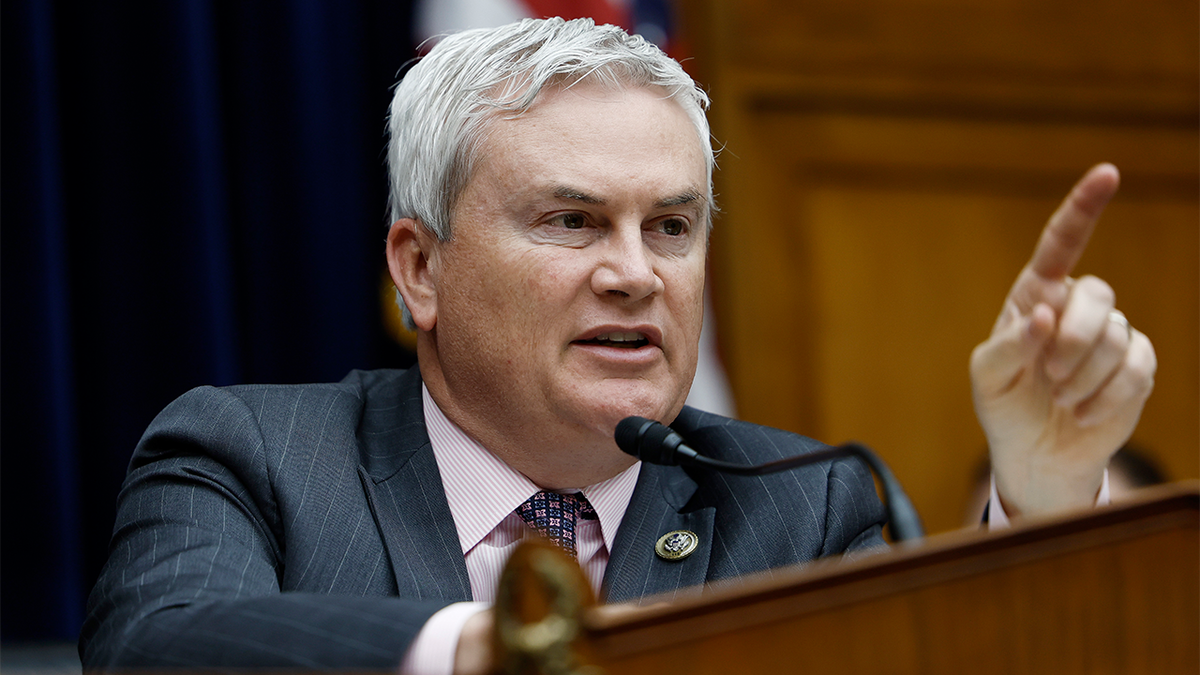
House Oversight and Accountability Committee Chairman James Comer is leading the probe into Biden. (Anna Moneymaker/Getty Images)
Jeff Zients, who served as Biden’s chief of staff for the final two years, was also asked to sit for a transcribed interview, a committee aide previously told Fox News Digital.
CLICK HERE TO GET THE FOX NEWS APP
A source familiar with the Biden team’s thinking previously called Republicans’ probe «dangerous» and «an attempt to smear and embarrass.»
«And their hope is for just one tiny inconsistency between witnesses to appear so that Trump’s DOJ prosecute his political opponents and continue his campaign of revenge,» that source said.
When reached for comment, Adrienne Watson, a representative for Sullivan, told Fox News Digital, «Jake did not have a conversation with Ron about Joe Biden running for president before the debate.»
Fox News Digital also reached out to Klain’s attorney as well as a contact for comment for Clinton but did not hear back by press time.
INTERNACIONAL
Un respiro para Pedro Sánchez: estalla un escándalo de corrupción de un ex ministro del Partido Popular de España
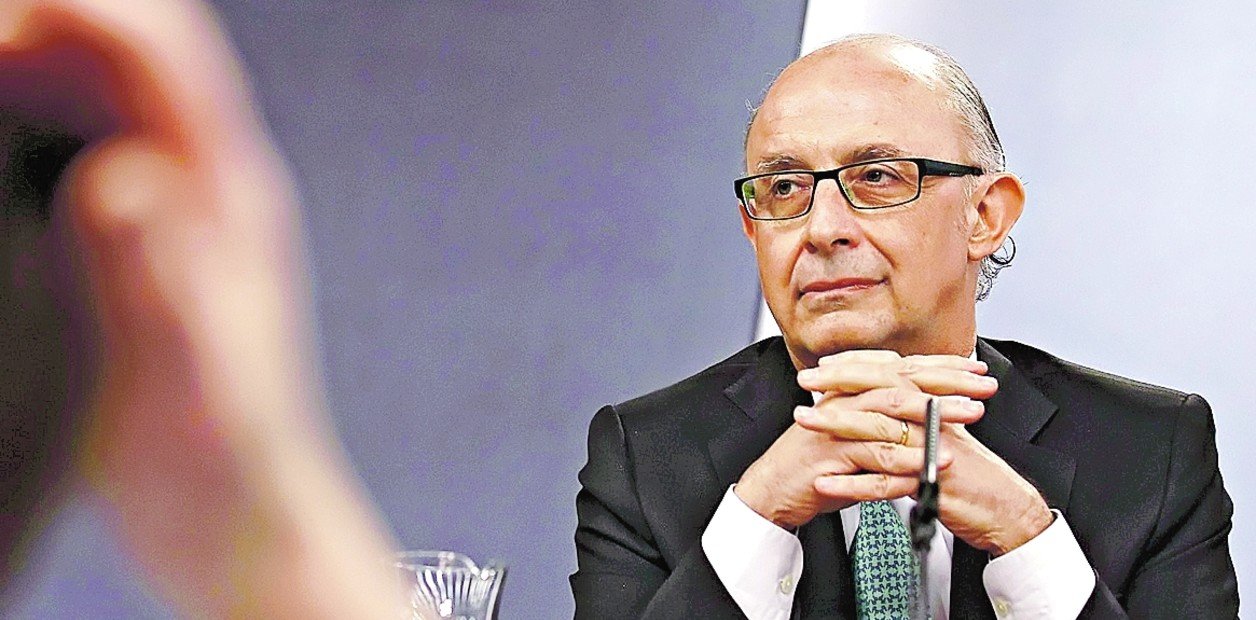
De viaje oficial por América del Sur -donde esquivó la Argentina por su falta de sintonía con el presidente Javier Milei-, Pedro Sánchez celebró, a la distancia, los dos años desde las últimas elecciones generales que le permitieron volver a ser elegido jefe del gobierno de España en julio de 2023.
Desde hace meses, las investigaciones judiciales que agobian a su entorno le dejan poco margen para festejar.
Porque a las denuncias presentadas contra su esposa, Begoña Gómez, por presunto tráfico de influencias, y a la imputación de su hermano, David Sánchez, por haber ocupado un puesto en la Diputación de Badajoz presumiblemente diseñado a medida para él, se suman la causa contra el fiscal general del Estado, por posible revelación de secretos, y la corrupción que involucra a dos ex altos funcionarios del Partido Socialista que Sánchez lidera por haber cobrado coimas en la adjudicación de obras públicas a empresas privadas.
Esta causa apunta al ex ministro de Transportes, José Luis Abalos, a un ex chofer suyo y asesor, Koldo García, y al ex secretario de organización del PSOE, Santos Cerdán, en prisión preventiva desde fines del mes pasado.
Con este peso sobre sus espaldas, Pedro Sánchez llegó a las puertas del verano europeo con el último aliento de resistencia a las presiones de la oposición para que presente su renuncia y convoque nuevas elecciones.
Hasta que hace unos días, el levantamiento del secreto de sumario de una investigación abierta en 2018 contra un ex ministro del Partido Popular (PP), la principal fuerza de la oposición, le dio un respiro al presidente Sánchez.
Cristóbal Montoro, ministro de Hacienda en el gobierno de José María Aznar, entre abril de 2000 y abril de 2004, y en el mandato de Mariano Rajoy, entre diciembre de 2011 y junio de 2018, está acusado de manipular leyes a medida para beneficiar a empresas privadas.
Las compañías presuntamente favorecidas con la legislación que Montoro se habría ocupado de hacer modificar o aprobar eran clientas de un estudio de abogados que el mismo Montoro había fundado antes de ingresar en la función pública como ministro.
“El uso de tales potestades habría permitido a Equipo Económico (el estudio que el ex ministro abrió en 2008) poder ofrecer a sociedades de distintos sectores reformas que beneficiasen sus intereses económicos, en menoscabo del sector público”, señala el auto del juez Rubén Rus, titular del Juzgado de Instrucción 2 de Tarragona, que acaba de hacerse público.
Según el juez, las empresas dedicadas al rubro energético del gas que contrataron al estudio de Montoro entre 2011 y 2019 habrían desembolsado unos 780 mil euros por sus servicios.
“Quien tiene que dar explicaciones, en sede judicial, es el señor Montoro”, defendió al PP la vocera del partido en el Congreso, Ester Muñoz.
“Por supuesto, van a intentar que esto parezca que es un empate”, agregó Muñoz en alusión al caso de corrupción dentro del Partido Socialista que le borró la sonrisa de la cara a Pedro Sánchez.
“Conviene no insultar a la inteligencia de los españoles -agregó la portavoz del PP-. Porque el caso Koldo (como se conoce en España al cobro de coimas de los ex funcionarios socialistas) afecta al gobierno actual.”
Las malas noticias para el Partido Popular, sin embargo, no terminan aquí. Noelia Núñez, una joven diputada del PP con proyección dentro del partido, acaba de renunciar a sus cargos políticos luego de admitir que en su currículum (CV) figuran estudios que nunca terminó.
Nuñez había sido elegida vicesecretaria de Movilización y Reto Demográfico del PP y en el CV que presentó en el Congreso de los Diputados y en otros organismos oficiales figuraba como licenciada. A veces en Derecho, en otras ocasiones, en Estudios Ingleses. Incluso llegó a adjudicarse un doble grado en Derecho y en Ciencias Jurídicas de las Administraciones Públicas en la UNED (Universidad Nacional de Educación a Distancia). Finalmente se supo que no se graduó en ninguna de las especializaciones de cuyos títulos académicos presumía.
“Con mi decisión muestro el camino a todos aquellos dirigentes socialistas que, con bastante más que esconder o tapar, siguen aferrados a sus cargos y sobreviven en política confiando en la amnesia de la gente o el engaño de los ciudadanos”, señaló la ex diputada en su renuncia, aludiendo al principal argumento de su partido: que Pedro Sánchez debería abandonar el Palacio de la Moncloa.
INTERNACIONAL
Rosas negras y ruinas sumergidas: así es Halfeti, la ciudad escondida en el Éufrates que resurgió entre el mito y la modernidad
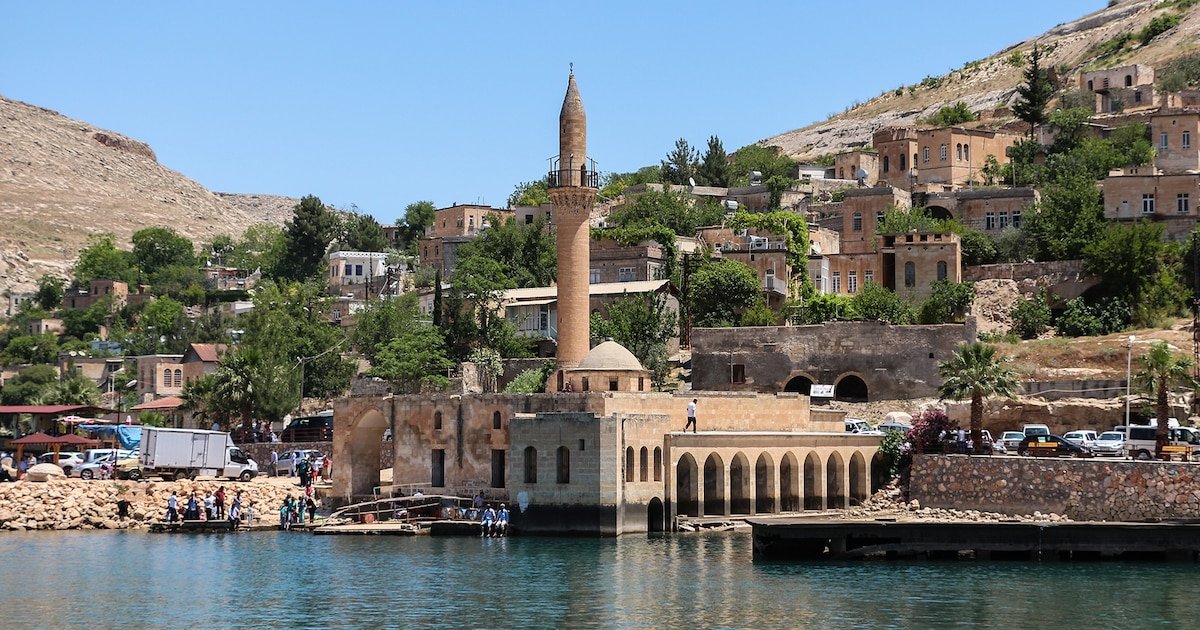
En el sureste de Turquía, a orillas del legendario río Éufrates, una ciudad emerge parcialmente de las aguas, envuelta en misterio y leyendas.
Halfeti, conocida como la “ciudad sumergida”, tuvo que transformar radicalmente su fisionomía tras quedar parcialmente bajo el agua por la construcción de la presa de Birecik, en el año 2000.
Actualmente, este enclave no solo atrae a visitantes por su singular paisaje y arquitectura sumergida, sino que también fascina al mundo con el enigma de sus famosas “rosas negras“, flores que han dado lugar a mitos, debates científicos y un renovado sentido de identidad local, según reportó CNN Travel.

A principios del nuevo milenio, la construcción de la presa de Birecik, una estructura de 60 metros de altura y 2,4 kilómetros de ancho, provocó la inundación de dos pueblos y diez aldeas en la provincia de Sanliurfa.
Según consignan medios locales, alrededor del 40% de Halfeti, que contaba con unos 2.600 habitantes, quedó sumergido bajo las aguas. Entre las edificaciones perdidas se encontraban numerosas casas de piedra, comercios y una parte significativa de la Merkez Camii, la mezquita central del siglo XIX.
La presa de Birecik forma parte de un ambicioso plan de desarrollo para el sureste de Anatolia, que incluye varias de estas estructuras a lo largo de los ríos Éufrates y Tigris. Su embalse, de 52 kilómetros cuadrados, se diseñó para regar 70.000 hectáreas de tierras agrícolas y generar unos 2.500 GWh de electricidad al año, suficiente para abastecer a casi un millón de hogares turcos.

Sin embargo, el impacto en la población local fue profundo y, en muchos casos, doloroso. Más de 6.000 personas tuvieron que ser reubicadas, y la comunidad perdió parte de su patrimonio tangible e intangible. Erhan Yildirim, investigador local, historiador y guía profesional, expresó a CNN Travel: “No se puede recuperar la cultura; la cultura permanece bajo el agua”.
Antes de la inundación, la economía de esta población era, básicamente, agropecuaria, con una reputación especial por la producción de pistachos. Muslum Karaman, operador de barco local, relató a CNN Travel que “la gente de Halfeti solía ganarse la vida con la cría de ganado y la agricultura”. Sin embargo, la llegada de la presa y la consiguiente transformación del entorno los obligaron a buscar nuevas formas de subsistencia.
Karaman explicó que la ciudad “ha cambiado completamente hacia el turismo“, y que muchos habitantes han adaptado sus viviendas para convertirlas en restaurantes, boutique y cafeterías. Esta reinvención económica le permitió a la comunidad mejorar su calidad de vida y aprovechar el creciente interés de los visitantes por la singularidad de Halfeti.

En la actualidad, Halfeti se posiciona como un destino turístico singular. Los visitantes llegan atraídos por la posibilidad de recorrer en barco, moto acuática o flyboard la arquitectura sumergida de la ciudad antigua.
El buceo se ha convertido en una de las actividades favoritas, impulsada por la apneísta turca Şahika Ercümen, quien en 2020 realizó una inmersión en Halfeti para sensibilizar sobre la contaminación por plásticos.
Además de la arquitectura sumergida, los turistas pueden realizar excursiones en barco hasta la fortaleza de Rumkale, situada a orillas del Éufrates. Este sitio histórico, cuyos cimientos datan del Imperio bizantino, permite a los visitantes explorar restos de fortificaciones armenias y conocer la compleja historia de la región, marcada por el paso de diferentes civilizaciones.

Uno de los mayores atractivos de Halfeti es el misterio de sus “rosas negras“, flores que han dado lugar a leyendas y debates científicos. Según la tradición local, es el único lugar del mundo donde florecen.
Yildirim sostiene que “si cultivas la rosa negra en cualquier otro lugar, nunca te dará el mismo color”. No obstante, expertos internacionales cuestionan su existencia. Michael Marriott, reconocido especialista floricultura, declaró a CNN Travel: “No creo que ninguna de las llamadas flores negras sea realmente negra”.
Por otra parte, Guy Barter, horticultor jefe de la Royal Horticultural Society del Reino Unido, coincide en que “las rosas negras, y en general las flores negras, rara vez son completamente negras, si no de un granate muy intenso o, como en este caso, de un rojo muy oscuro”.
El color oscuro de las rosas de Halfeti se atribuye a las condiciones únicas del suelo y el clima de la región. Marriott sugiere que los agricultores locales podrían estar utilizando raíces originales de las rosas, capaces de prosperar en suelos más ácidos, lo que oscurece los pétalos. Birsen Aşağı, vendedora local, atribuye el fenómeno a las “condiciones climáticas de aquí”.

A pesar de las dudas sobre su autenticidad, las rosas negras de Halfeti han adquirido fama internacional. Marcas como la perfumista británica Penhaligon’s han lanzado fragancias inspiradas en la flor, y los productos derivados se han convertido en un símbolo de la ciudad.
Las leyendas locales enriquecen el mito de la rosa negra. Una de ellas narra la historia de Adir, un arquitecto que construyó la mezquita de la ciudad, y su nieta Vartuhi, quien cultivaba las rosas más hermosas.
Vartuhi se enamoró de Firat, un huérfano del otro lado del río, pero su amor fue prohibido. Desesperados, ambos se arrojaron al Éufrates y, desde entonces, las rosas de Halfeti florecen negras en señal de luto.
Otra versión, relatada por Yildirim, atribuye la flor al Diablo, quien, tras el asesinato de una niña inocente, decretó que la rosa negra solo florecería en el lugar de su muerte, como símbolo de dolor y venganza.

A pocos kilómetros del pueblo, la fortaleza de Rumkale se alza como testigo de la historia milenaria de la región. Según CNN Travel, sus cimientos datan del Imperio bizantino, entre los siglos V y VI, aunque existen indicios de estructuras anteriores.
Durante los siglos XII y XIII, la fortaleza fue residencia del Catholicós, líder espiritual de la Iglesia armenia, y posteriormente cayó en manos de los mamelucos en 1292, antes de pasar al control del Imperio Otomano. La arquitectura de Rumkale, visible desde el río, recuerda la compleja y a menudo turbulenta historia de Anatolia, marcada por el cruce de culturas y religiones.
En 2013, Halfeti fue reconocida como parte de la red Cittaslow, un movimiento internacional que promueve la calidad de vida y la preservación de la cultura local.

 ECONOMIA2 días ago
ECONOMIA2 días agoEl consumo en Argentina crece 4% en junio, ante menor inflación y más crédito

 CHIMENTOS2 días ago
CHIMENTOS2 días agoEl desgarrador testimonio del hermano de Locomotora Oliveras: “El daño es irreversible, solo puede vivir con respirador”

 POLITICA1 día ago
POLITICA1 día agoMáximo Kirchner declaró una fortuna de 8.300 millones de pesos: representa un 76% más que el año anterior

























